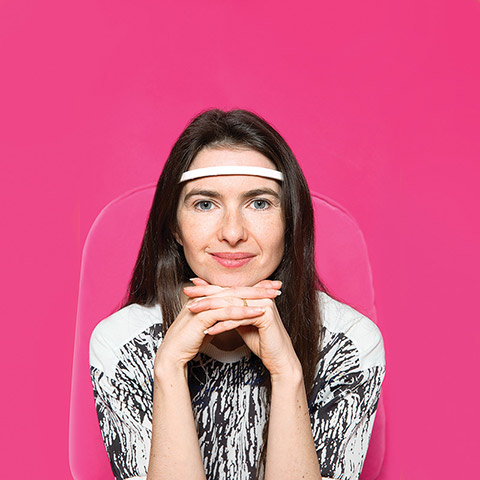Ariel Garten, 36, has already enjoyed many careers (artist, psychotherapist, fashion designer, business CEO) – and her latest venture combines many of her passions. She and the InteraXon team have created the Muse headband, a piece of wearable technology that “reads” the brainwaves of meditators. Using technology similar to that used in EEG machines, they are also responsible for such inventions as a mind-controlled beer tap and a levitating chair. Recently, Garten (BSc 2002 UC) spoke her mind with Cynthia Macdonald.
The Muse headband can do several things; for example, it allows people to move objects with their minds. But your biggest brainchild has to be the one you call “Bright Ideas.” What was that about?
For the 2010 Olympics, we came up with the idea of getting people in Vancouver to control the lights on the CN Tower in Toronto, the Parliament Buildings in Ottawa and the light tower at Niagara Falls. When headsets detected increases in the participants’ focus levels (and their beta activity), the technology sent a signal to a computer in Vancouver – which then signalled to a computer in the CN Tower, for example, for the lights to spin faster. It succeeded! Over 17 days, more than 7,000 people got to interact with these massive icons across the country.
It’s amazing that human brains can do this – but then, I guess they move things all the time! When I want to move my hand, that desire travels through my body’s wiring so the action can be completed. I guess you’ve just taken that wiring outside the body?
Our neurons communicate electrochemically. The electrical activity in your brain sums into waves, which can be read on the surface of your head. The voltages are very small, but the Muse headband can detect minute changes in them and let another digital or mechanical interface know that it should perform an action.
I understand there’s a lot of U of T brainpower behind InteraXon’s inventions – including that of Steve Mann, a professor of computer engineering and “father of wearable computing.”
Steve is a wonderful treasure for U of T to have. Right after I graduated [in psychology and neuroscience], I started collaborating with him, as well as Chris Aimone and James Fung, who were then his grad students. Later on, our Bright Ideas team included many U of T grads – especially from engineering science.
Now on to meditation – which, as everyone knows, is pretty hard to do. How does Muse calm what’s known in Buddhism as the “monkey mind”?
When most people try to meditate, their brain jumps all over the place; they don’t know what they’re supposed to be doing. But MUSE actually teaches you how to meditate. It lets you hear when your mind is wandering, and teaches you how to bring it back. You get real-time feedback on what your brain is doing, as it guides you to the ultimate goal: single-pointed attention.
Watch an interview with Ariel Garten, in which she talks about the Muse headband:
Recent Posts
U of T’s 197th Birthday Quiz
Test your knowledge of all things U of T in honour of the university’s 197th anniversary on March 15!
Are Cold Plunges Good for You?
Research suggests they are, in three ways
Work Has Changed. So Have the Qualities of Good Leadership
Rapid shifts in everything from technology to employee expectations are pressuring leaders to constantly adapt






